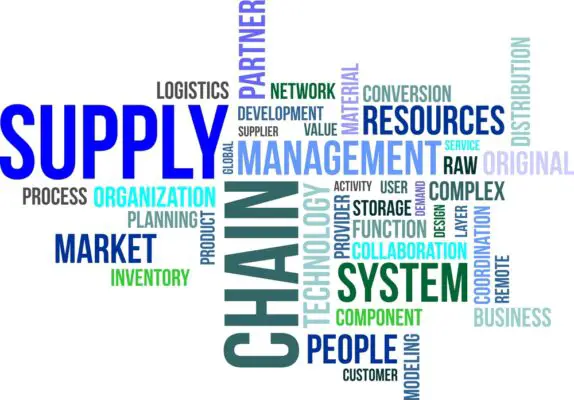Understanding the measurement of risk is essential for finance and investment. It helps identify threats, implement management strategies, and evaluate potential losses for informed decisions.
Understanding market risk is crucial for evaluating the negative possibilities associated with investment assets and is a key component of comprehensive risk measurement.
Risk measurement quantifies potential losses at a certain confidence level and aids in managing various risks effectively. Sources of risk include economic, operational, legal, financial factors, and market dynamics.
Categorizing and rating risks assist in organizational resilience and efficient resource allocation.
Mitigation strategies involve diversification, hedging, and using derivatives. A risk register prioritizes risks based on likelihood and consequences, aiding in effective risk management.

Learn more about the importance, functions, and sources of risk to enhance decision-making.
Key Takeaways
- Identifying threats and vulnerabilities is crucial.
- Quantifying losses and managing uncertainties.
- Sources include economic, operational, and legal factors.
- Functions involve simulating outcomes and managing risks.
- The importance lies in proactive mitigation and informed decisions.
Learn the Common Ways to Measure Risk in Investment Management
Understanding the common ways to measure risk in investment management involves exploring quantitative methods like Value at Risk (VaR) and historical simulation.
These tools, which are central to risk measurements, help quantify the level of risk and identify sources of uncertainty that could impact investments.
Risk measurements involve assessing potential financial risks using mathematical and statistical measures, including but not limited to VaR and historical simulation, to evaluate and manage the risks associated with investments, portfolios, and new ventures.
VaR and Historical Simulation
Quantifying risk in investment management is commonly achieved through techniques such as Value at Risk (VaR) and Historical Simulation.
These are essential for evaluating potential losses and managing uncertainties in portfolios.
These methods play a vital role in evaluating and managing risk by providing insights into potential losses and aiding in risk mitigation strategies.
To explore further into the understanding of VaR and Historical Simulation:
- VaR quantifies potential losses at a given confidence level over a specific time horizon.
- VaR helps manage both systematic and unsystematic risks.
- Historical Simulation uses past data to simulate future outcomes and assess portfolio risk.
- Historical Simulation aids in understanding potential downside risks in investment strategies.
Risk Sources Identification
Identifying common sources of risk is vital in effectively measuring risk in investment management.
Risk identification involves evaluating economic, operational, legal, and financial factors impacting investments. Common sources of risk encompass industry dynamics, competition, market demand, interest rate fluctuations, credit risks, and currency risks.
Part of identifying common sources of risk involves creating a risk register to document and analyze identified risks, assigning them probability and impact values for effective tracking and mitigation.
Factors affecting risk include the probability of an event occurring, the severity of its consequences, exposure time, and various environmental and personal factors.
Risk measurement aids in identifying potential threats and vulnerabilities that may affect investment performance.
Understanding sources of risk is essential for implementing effective risk management strategies in investment management, ensuring proactive mitigation of financial, operational, legal, and economic risks.
Categorizing and Rating Risks for Better Management
Categorizing and rating risks is essential for effective risk management. Through risk categorization methods, different types of risks can be identified and classified, enabling a better understanding of their nature and potential impact.
Utilizing impact assessment techniques and risk rating scales helps prioritize risks based on their likelihood and consequences, allowing organizations to allocate resources efficiently and develop targeted risk management plans.
Risk assessments involve measuring risk impact and likelihood using a risk matrix or register, which is crucial for prioritizing and focusing on critical uncertainties and potential threats.
Risk Categorization Methods
Efficient risk categorization methods are essential in enhancing organizational resilience and facilitating informed decision-making through structured assessment and prioritization of risks based on their characteristics and potential impact.
- Enhanced Prioritization: Categorizing risks allows for better allocation of resources to manage them effectively.
- Classification of Risks: Risks can be categorized into financial, operational, strategic, compliance, and reputational categories based on their specific aspects.
- Significance Determination: Rating risks according to their likelihood and impact helps decide the required response strategies.
- Improved Decision-making: Effective risk categorization and rating systems provide clarity and focus on key areas of concern, enhancing overall risk management processes and decision-making within the organization.
Impact Assessment Techniques
Impact assessment techniques are crucial in evaluating and prioritizing risks within organizations.
These techniques categorize risks based on severity, probability, and consequences, enabling efficient resource allocation.
Organizations can develop specific risk management strategies by assessing the impact on financials, reputation, operations, and compliance.
Rating risks enhances decision-making by focusing on critical areas needing immediate attention.
Robust impact assessment processes help organizations proactively address risks, minimize negative effects, and safeguard operations for long-term sustainability.
Risk Rating Scales
Effective risk management relies on strategically using structured risk rating scales to assess and prioritize potential threats and vulnerabilities within an organization or investment portfolio.
These scales enable a systematic approach to categorizing and rating risks based on factors like likelihood, impact, and severity.
Organizations can efficiently allocate resources and implement tailored risk mitigation strategies by assigning numerical ratings to risks.
Risk rating scales enhance decision-making by providing a thorough framework for understanding and managing various types of risks.
The common risk rating scales such as the Likelihood-Consequence Matrix, Risk Impact Matrix, and Risk Probability and Impact Matrix offer a detailed way to evaluate and address vulnerabilities effectively.
Risk Measurement In Investment Explained
When it comes to investment risk measurement, understanding quantitative risk assessment methods is key.
By utilizing tools like Value at Risk (VaR) and historical simulation, investors can quantify the level of risk associated with their investments.
Statistical measures like R-squared utilize the benchmark index to represent the percentage of a fund portfolio or a security’s movements that can be explained by movements in indices such as the S&P 500, providing a clearer picture of how closely an investment follows market trends.
Implementing effective risk mitigation strategies based on these measurements can help stakeholders make informed decisions to protect their investments.
Quantitative Risk Assessment
Using statistical methods, quantitative risk assessment plays a pivotal role in evaluating and measuring investment risks.
- Quantitative Techniques:
- Standard deviation, Sharpe ratio, beta, VaR, and CVaR are commonly used to assess different aspects of risk in investments. The concept of a deviation risk measure further explains the relationship between variance and standard deviation as risk measures, highlighting their significance in quantifying the variability and volatility within an investment portfolio.
- VaR Significance:
- Value at Risk (VaR) quantifies potential loss and likelihood, managing both systematic and unsystematic risk factors.
- Risk Management:
- Quantitative risk assessment assists investors in understanding and managing risk levels effectively within their investment portfolios.
- Informed Decision-Making:
- Investors can make informed decisions based on quantitative risk analysis using specific methods like standard deviation, beta, and Sharpe ratio.
Higher R-squared values in risk models signify that the independent variables within the model explain a greater portion of the variation of the dependent variable, underscoring the variations.

Risk Mitigation Strategies
To effectively safeguard investments from potential risks, implementing strategic risk mitigation strategies is imperative in the field of investment management.
Risk mitigation involves various techniques such as diversification, hedging, options, futures contracts, and stop-loss orders to manage and reduce risks effectively.
Diversification helps spread investments across different assets to minimize unsystematic risk while hedging protects against adverse market movements.
Options and futures contracts manage risk exposure and provide downside protection in volatile markets. Stop-loss orders automatically sell a security at a predetermined price to limit potential losses.
Evaluating portfolios using risk-adjusted measures like the Sharpe ratio enables investors to assess performance relative to the risks taken.
| Risk Mitigation Strategies | Benefits |
|---|---|
| Diversification | Reduces unsystematic risk |
| Hedging | Offsets potential losses |
| Options, Futures Contracts | Manages risk exposure |
How to use a risk register?
A risk register is essential for documenting and managing risks in projects or organizations.
It serves the purpose of tracking key information related to identified risks, including their potential impact and likelihood of occurrence.
Purpose of Risk Register
A risk register aims to systematically identify, evaluate, and prioritize potential risks within risk management practices.
As a documented tool in risk management, the risk register plays an essential role in the process. Here’s how it is utilized:
- Identify Risks: The risk register helps document all potential risks that could impact a project, organization, or investment.
- Assess Risks: It enables a structured assessment of the likelihood and impact of each risk identified.
- Prioritize Risks: By evaluating risks, the register aids in prioritizing them based on their potential consequences.
- Tracking and Monitoring: It allows for the continuous tracking and monitoring of risks, ensuring timely mitigation strategies are in place.
Key Information Tracking
In the domain of risk management practices, the utilization of a risk register is essential for effectively tracking and managing identified risks.
A risk register typically includes important details such as risk description, likelihood of occurrence, potential impact, assigned owner, current status, and proposed mitigation plans.
Regular risk register updates and reviews are vital to ensure effective risk management.
By using the risk register, organizations can prioritize risks based on their potential impact and probability of happening.
Additionally, this tool aids in facilitating communication among stakeholders involved in risk management processes, ensuring that everyone is informed and accountable for managing risks effectively.

Risk Mitigation Strategies
Utilizing a risk register is instrumental in effectively implementing risk mitigation strategies within projects or organizations.
When using a risk register, key steps should be followed to guarantee thorough risk management:
- Identify Risks: Begin by listing all potential risks that could impact the project or organization.
- Assess Risks: Evaluate each risk’s potential impact and likelihood of occurrence to prioritize them effectively.
- Prioritize Risks: Rank risks based on their severity and the need for immediate attention.
- Mitigation Strategies: Develop and document specific strategies to address and reduce the impact of identified risks.
Effective Use of Risk Registers in Operational Oversight
An essential tool for enhancing operational oversight and risk management within organizations is efficiently utilizing a thorough risk register.
A risk register helps to identify, assess, manage, and prioritize risks based on their potential impact and likelihood of occurrence.
Organizations can develop effective risk mitigation strategies by including risk descriptions, root causes, potential consequences, risk owners, and mitigation plans.
Regular updates and reviews of the risk register are important to make certain that new risks are captured and existing risks are monitored and managed effectively.
By providing a structured framework for risk management, risk registers play a significant role in enhancing operational oversight and decision-making processes within organizations.
Difference Between Risk Measurement And Risk Management
Risk measurement and risk management are distinct yet interconnected aspects of financial analysis.
While risk measurement involves quantifying the level of risk using tools like VaR and standard deviation, risk management focuses on identifying, evaluating, and mitigating risks to minimize their impact.
Understanding these two processes’ differences is essential for effectively managing uncertainties and making informed investment decisions.
Systematic risk, being unverifiable and affecting the entire market, highlights the importance of distinguishing between risk measurement and risk management strategies, such as hedging, to mitigate its impact.
Value at Risk (VaR)
Value at Risk (VaR) is an essential statistical measure that helps quantify the potential loss in value of an investment or portfolio over a specific period with a certain level of confidence.
Here’s how VaR aids in differentiating risk measurement from risk management:
- VaR estimates the maximum potential loss under normal market conditions, aiding in understanding and managing exposure to risk.
- It considers the probability of occurrence and the magnitude of potential losses, enhancing risk assessment.
- By calculating VaR, investors can determine the capital at risk, enabling them to set appropriate risk tolerance levels.
- Widely used in financial institutions, VaR helps control downside risk in portfolios, improving risk management practices.
Utilising Standard Deviation in Risk Management Strategies
Utilizing standard deviation in risk management strategies provides a quantitative framework for evaluating the variability and potential risks associated with investments.
Standard deviation measures the volatility of an investment, offering insights into the range of potential returns and associated risks.
By incorporating standard deviation in quantitative risk assessment, investors can compare risk levels across different investments, aiding in informed decision-making in portfolio management.
Understanding the uncertainty or risk represented by standard deviation informs decisions on effective portfolio diversification strategies.
This approach can lead to improved risk-adjusted returns by aligning investment decisions with the level of risk tolerance desired, ultimately enhancing the overall performance and stability of investment portfolios.
Benefits of Holistic GRC Software for Strategic Risk Management
Implementing a holistic GRC software solution offers organizations a streamlined approach to integrating governance, risk, and compliance functions for all-encompassing strategic risk management.
This software enhances decision-making by providing real-time insights into risk exposure and mitigation strategies, enabling a unified view of strategic risks across the organization.
It also facilitates alignment with business objectives by effectively identifying and prioritizing strategic risks.
Additionally, holistic GRC software improves accountability and transparency in risk management practices, ultimately leading to better strategic planning and decision-making processes.
Frequently Asked Questions
What Are the Sources and Measurements of Risk?
Sources of risk in investments include economic, operational, legal, business, and financial factors.
Measurement methods such as VaR or historical analysis help quantify risk levels. Stakeholders can mitigate negative outcomes by understanding and managing these risks effectively.
What Is the Importance of Risk Measures?
Risk measures are crucial tools for evaluating the potential impacts of uncertainties on investments or projects.
They help stakeholders understand risks, identify functions, and determine sources. Quantitative methods like VaR or historical simulation aid in quantifying risk levels.
What are the methods of Measuring risk?
Various methods of measuring risk include quantitative techniques like Value at Risk (VaR) and historical simulation, which quantify uncertainties in investments.
Stakeholders use these methods to assess, manage, and mitigate risks arising from market fluctuations, political changes, or interest rate movements.
What Are the 5 Importances of Risk Management?
Effective risk management is vital for organizations because it minimizes financial losses, enhances decision-making, ensures regulatory compliance, provides a competitive advantage, and improves operational efficiency.
It safeguards financial stability and sustainability.

Conclusion
Risk measurement in investment and project management is vital for evaluating potential uncertainties and making informed decisions.
By utilizing quantitative techniques and considering various risk sources, stakeholders can accurately quantify risk exposure and implement strategies to manage and mitigate adverse outcomes.
Understanding risk measurement’s importance, functions, and sources is essential for effective risk management and overall project success.

Chris Ekai is a Risk Management expert with over 10 years of experience in the field. He has a Master’s(MSc) degree in Risk Management from University of Portsmouth and is a CPA and Finance professional. He currently works as a Content Manager at Risk Publishing, writing about Enterprise Risk Management, Business Continuity Management and Project Management.

